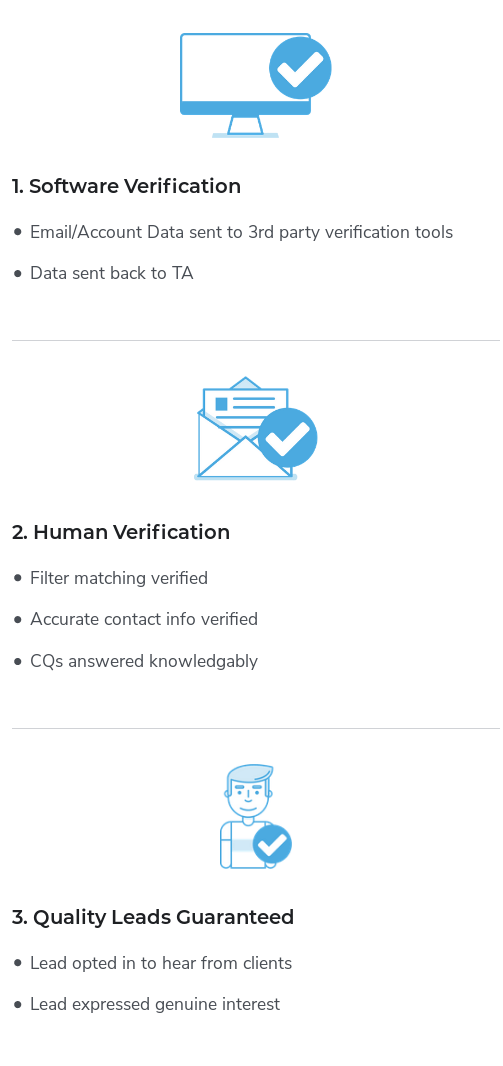 At VirtualPBX, we try to learn everything we can about our customers, including their business-sustaining activities like lead generation.
At VirtualPBX, we try to learn everything we can about our customers, including their business-sustaining activities like lead generation.
This is important because we offer more than just a Business Phone System. We offer customers a way to contact and keep in touch with their own customers. And getting into the mindset of staff members involved in, for instance, lead generation, helps us create a better product for those individuals.
That said, let’s take a minute to look at the functions and development of lead generation at a typical business.
Methods of Lead Generation
There are a number of methods in which companies can develop and nurture leads. Whether they sell business-facing goods or consumer services, the channels of voice, social media, and lead generation partnerships are a few of the primary ways business can find prospects who want to purchase what they offer.
Voice
Closest to home, of course, is the voice channel. It’s our specialization. We offer a Business Phone System to entrepreneurs, midsize outfits, and enterprises so they can speak directly to leads.
Phone calls border the line between a primary and secondary method of lead generation.
Why? Individuals might make “cold calls” to a list of businesses listed in a phone number directory. In days past, you could look through a printed phone book’s yellow pages to get names and numbers. Today, the initial (primary) step of number gathering might take place through a web search for “[your market here]”.
One might say that, strictly speaking, calls themselves don’t generate the lead. That’s done within the number-lookup process. However, phone calls to these “cold” leads can turn them into “warm” leads when a follow-up call is scheduled or when the contact refers the caller to an additional person.
Scheduling a follow-up call warms up the lead to engage further with the business. Likewise, gaining a referral creates a warm lead from where one didn’t exist. These examples suggest that the phone call might have started the true process of making a sale – being the primary driver of finding the lead.
In any case, making voice calls becomes an important part of the sales process for many companies.
Social Media
A quick mention of social media in this article feels obligatory.
Social sites like Twitter, Facebook, and LinkedIn dominate the business world in the news and on their websites. The phrase “find us on social” is impossible to miss.
Social sites work well for finding leads because businesses can meet individuals where they already congregate. If you’re a B2B company, you might find LinkedIn an appropriate avenue for reaching CEOs of enterprises. Or if you’re a small seller of jewelry, perhaps a product page on Facebook can work better.
In all cases, links from social media posts require additional information to identify leads. For example:
A VirtualPBX post about our SIP Trunking Whitepaper might lead a user to our download page, which asks them for a name, email, and interest in the company or service. Our Sales team can then reach out to that person if their interests match what we have to offer.
The lead has warmed at this point, but it will require a follow-up. A phone call or email from Sales would be able to create a longer discussion with the potential customer.
 Lead Generation Partnerships
Lead Generation Partnerships
Instead of doing all the work themselves, Sales or Marketing associates can seek the help of companies dedicated to lead generation.
A company like TechnologyAdvice filters its lists of individuals and businesses to create accurate leads that its clients can contact directly.
For many midsize business and enterprise clients, these leads lists can be an invaluable part of lead nurturing because they save a lot of time.
Lead lists cut out the beginning steps of cold calling (or gathering numbers haphazardly and then calling cold), cold emailing, or creating social media posts and waiting for visitors to share information. They create an assurance that the clients’ time isn’t wasted in taking second steps because the leads were validated to begin with.
TechnologyAdvice even provides the guarantee that the leads it delivers have opted in to hearing from clients and have expressed interest in hearing about specific products and services.
Function and Result
If you haven’t gathered the point already: Lead generation is about creating a base of contacts on which your company can act.
You want to develop relationships with individuals and businesses in order to sell your goods. This has to begin somewhere – a “somewhere” which is definitively the first contact through phone, email, social, or any other type of communication you prefer.
Some of these channels help you pull double duty by developing good leads and securing commitments like second phone calls or requests for more information. Others may fit better after leads lists are found from partnerships.
There’s no single correct way to have your business to make contact with potential customers — whether you prefer to use multiple phone numbers or stick to social as your go-to. Far from complete, the options mentioned in this article only scratch the surface.
We didn’t mention email in depth, texting, video chat, video marketing, radio ads, or newsletters as part of the advertising/lead generation mix. We’re at 900 words already, so we’ll let you get back to work.
Just remember that lead generation is a must for your company to find success. It’s up to you to find out how you want to proceed with it. Good luck.








